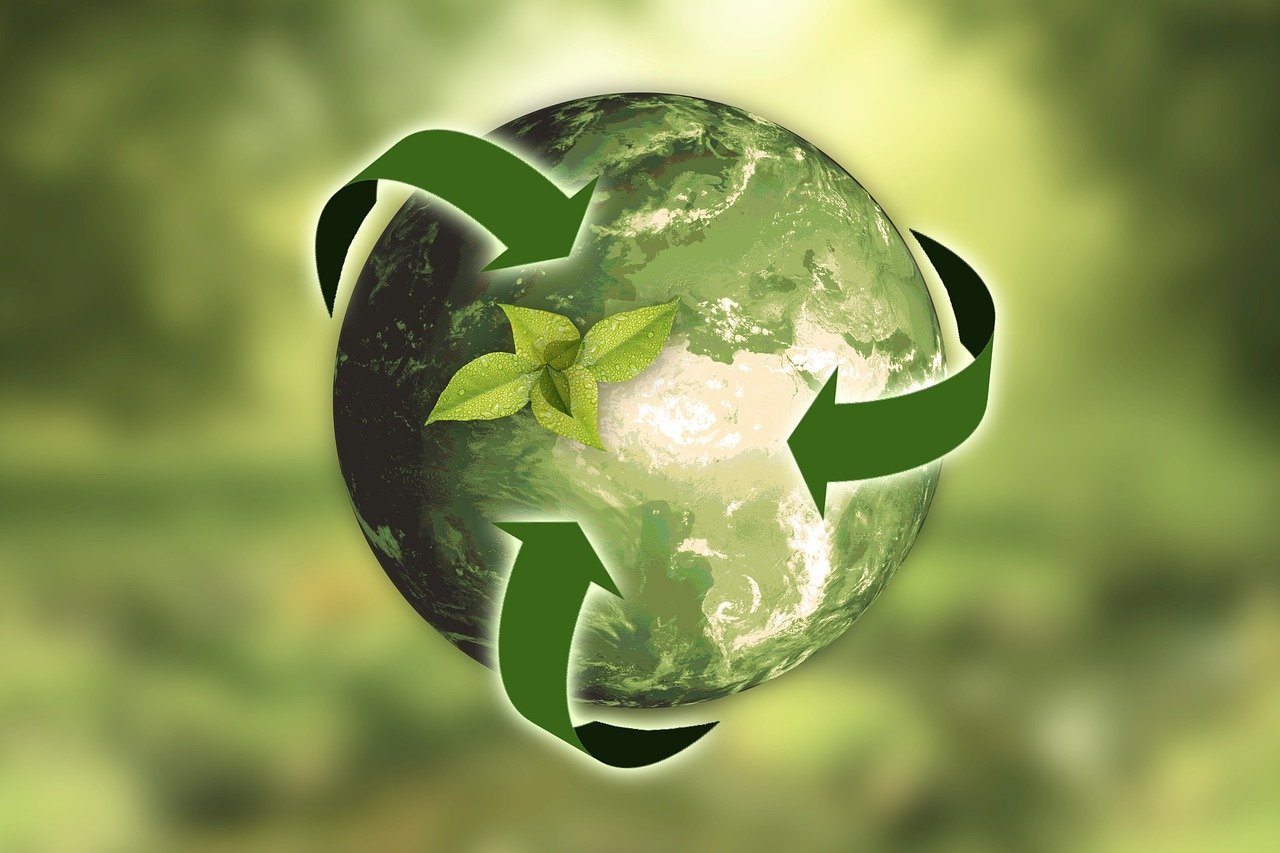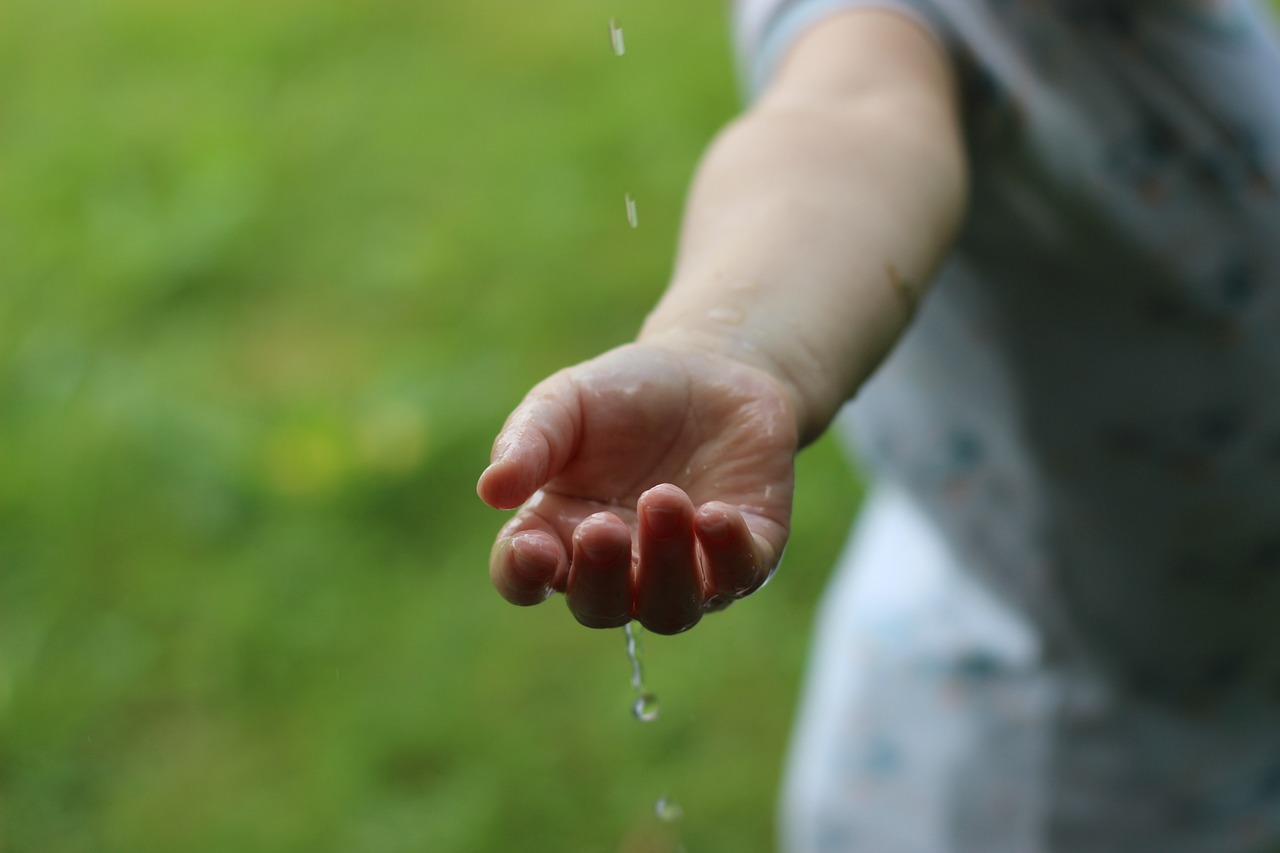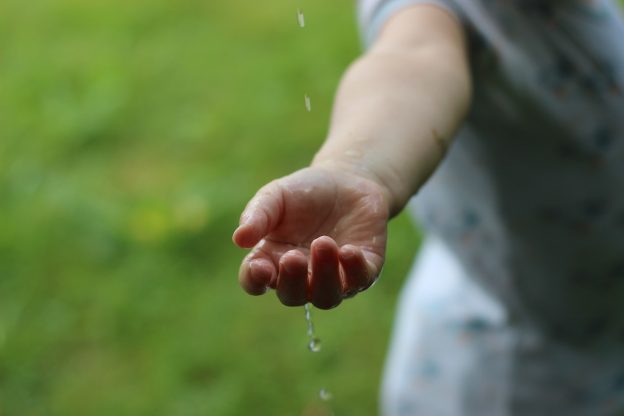Green home construction is a growing trend in the world of architecture and design. With increasing awareness of the environmental impact of traditional building methods, more and more individuals and businesses are opting for sustainable and eco-friendly homes. This article provides valuable insights into the concept of green home construction, highlighting its benefits, key principles, and popular practices. From using renewable materials to incorporating energy-efficient systems, this article aims to inform and inspire readers to consider green home construction as a viable option for their next building project.

Benefits of Green Home Construction
Green home construction offers numerous benefits to homeowners, the environment, and society as a whole. By adopting sustainable practices and using eco-friendly materials, green homes are designed to be energy-efficient, reduce environmental impact, and promote a healthier living environment. Let’s delve into these benefits in more detail.
Energy Efficiency
One of the significant advantages of green home construction is the emphasis on energy efficiency. Green homes are designed to minimize energy consumption and reduce reliance on non-renewable energy sources. Through the use of advanced insulation, energy-efficient windows and doors, and properly sealed air ducts, these homes are better equipped to maintain a consistent and comfortable indoor temperature while minimizing the need for excessive heating or cooling.
By reducing the energy demand, green homes contribute to lower utility bills, providing long-term financial savings for homeowners. Moreover, the reduced energy consumption also benefits the environment by decreasing the overall carbon footprint and mitigating climate change.
Reduced Environmental Impact
Green home construction is committed to reducing the environmental impact of the housing industry. By implementing sustainable practices and utilizing eco-friendly materials, these homes integrate seamlessly into the surrounding environment without causing significant harm.
Green homes often incorporate features such as rainwater harvesting systems, low-flow plumbing fixtures, and water-efficient landscaping. These practices not only reduce water waste but also alleviate pressure on local water resources. Additionally, the use of recycled or reclaimed materials, sustainable sourcing, and waste reduction strategies further minimize the environmental impact during construction and subsequent maintenance.
Healthier Living Environment
Another crucial benefit of green home construction is the creation of a healthier living environment for its occupants. Green homes prioritize indoor air quality through enhanced ventilation systems, the use of non-toxic and low-VOC materials, and proper moisture control to prevent mold growth.
By minimizing exposure to harmful pollutants and contaminants, green homes can greatly improve the overall health and well-being of those living within them. This is particularly important for individuals who suffer from respiratory issues or allergies, as green homes promote cleaner and healthier indoor air.
Key Components of Green Home Construction
To achieve the numerous benefits associated with green home construction, several key components should be carefully considered and implemented. Let’s explore these key components in more detail.
Site Selection and Design
The site selection and design phase of green home construction plays a crucial role in maximizing energy efficiency and minimizing environmental impact. Orientation and solar positioning are important factors to consider, as they determine how well a home can utilize natural sunlight for warmth and lighting. Additionally, preserving natural features and implementing optimal insulation placement are key components of site selection and design.
Energy Efficiency
Energy efficiency is a cornerstone of green home construction. This component focuses on reducing energy consumption and utilizing renewable energy sources whenever possible. High-quality insulation, energy-efficient windows and doors, proper air sealing, and the use of energy-efficient HVAC systems all contribute to enhanced energy efficiency in green homes.
Water Efficiency
Water efficiency aims to minimize water waste and preserve water resources. Implementing rainwater harvesting systems, low-flow plumbing fixtures, and water-efficient landscaping practices can significantly reduce the overall water consumption of a green home. These measures not only benefit the environment but also reduce water bills for homeowners.
Materials and Resources
The use of sustainable and eco-friendly materials is another important component of green home construction. By opting for recycled or reclaimed materials and locally sourced products, the environmental impact associated with material extraction and transportation can be greatly reduced. Additionally, waste reduction and recycling strategies ensure that construction materials are used efficiently and responsibly.
Indoor Environmental Quality
Indoor environmental quality focuses on creating a healthier and more comfortable living environment within a green home. This component emphasizes enhanced ventilation systems, the use of non-toxic and low-VOC materials, and proper moisture control to prevent mold growth. By prioritizing indoor air quality, green homes promote the overall well-being of their occupants.
Site Selection and Design
Proper site selection and design are fundamental to the success of any green home construction project. This phase determines how well a home can utilize natural resources and minimizes its environmental impact.
Orientation and Solar Positioning
During site selection and design, careful consideration should be given to the orientation and solar positioning of the home. The layout should be designed to maximize natural light and solar heat gain, minimizing the need for artificial lighting and excessive heating. By aligning the home with the sun’s path, energy efficiency can be enhanced, reducing reliance on non-renewable energy sources.
Landscaping and Rainwater Management
Green homes incorporate landscaping and rainwater management strategies to minimize water waste and mitigate stormwater runoff. Sustainable landscaping practices, such as native plant selection and efficient irrigation systems, can significantly reduce water consumption. Additionally, rainwater harvesting systems can collect and store rainwater for later use, further reducing the demand on municipal water supplies.
Preservation of Natural Features
Preserving the natural features of the site is essential for maintaining ecological balance and reducing the environmental impact of the home. Green home construction strives to protect existing trees, vegetation, and natural habitats, integrating the home into its surroundings in a harmonious and sustainable manner.
Optimal Insulation Placement
To maximize energy efficiency and minimize heat loss or gain, optimal insulation placement is crucial. Green homes prioritize insulation in key areas such as walls, roofs, and floors. Proper insulation placement ensures that the home can maintain a comfortable indoor temperature while minimizing the need for excessive heating or cooling, reducing energy consumption and utility bills.
Energy Efficiency
Energy efficiency is a cornerstone of green home construction. By implementing various measures to minimize energy consumption, green homes greatly reduce their impact on the environment and provide long-term financial savings for homeowners.
High-Quality Insulation
One of the most effective ways to enhance energy efficiency in green homes is through the use of high-quality insulation. Properly installed insulation helps regulate indoor temperature by reducing heat transfer through walls, roofs, and floors. This allows for more efficient heating and cooling, minimizing the need for excessive energy usage.
Energy-Efficient Windows and Doors
Windows and doors are also important factors in energy efficiency. Green homes prioritize the use of energy-efficient windows with low U-values and high R-values to minimize heat transfer. Additionally, energy-efficient doors with proper sealing play a significant role in maintaining indoor temperature and reducing energy loss.
Proper Air Sealing
Air sealing is crucial for energy efficiency in green homes. Properly sealed windows, doors, and air ducts prevent air leakage, minimizing drafts and ensuring that conditioned air stays inside the home. By reducing air infiltration, green homes can maintain a consistent indoor temperature with less reliance on heating or cooling systems.
Energy-Efficient HVAC Systems
Green homes employ energy-efficient heating, ventilation, and air conditioning (HVAC) systems to further enhance energy efficiency. These systems are designed to meet strict energy performance standards, reducing energy consumption while providing optimal comfort. Energy-efficient HVAC systems not only save homeowners money on utility bills but also contribute to a greener and more sustainable future.

Water Efficiency
Water efficiency is a key component of green home construction, focusing on reducing water waste and preserving water resources. Implementing water-saving measures not only benefits the environment but also provides financial savings for homeowners.
Rainwater Harvesting Systems
Rainwater harvesting systems capture and store rainwater for future use. Green homes often integrate rain barrels or underground tanks that collect rainwater from roofs and gutters. This collected water can then be used for tasks such as watering plants, flushing toilets, or washing cars, reducing reliance on municipal water supplies.
Low-Flow Plumbing Fixtures
Low-flow plumbing fixtures, such as water-efficient toilets, faucets, and showerheads, significantly reduce the amount of water used in daily activities. By incorporating these fixtures into green homes, water consumption can be reduced by up to 60% compared to traditional fixtures. This not only conserves water but also lowers water bills for homeowners.
Water-Efficient Landscaping
Water-efficient landscaping practices play a vital role in reducing water waste. Green homes often incorporate strategies such as native plant selection, mulching, and efficient irrigation systems to minimize water consumption. These practices ensure that landscaping remains vibrant and visually appealing while minimizing the need for excessive watering.
Materials and Resources
The materials and resources used in green home construction are carefully selected to minimize environmental impact and promote sustainability. By choosing eco-friendly materials and implementing waste reduction strategies, green homes contribute to a greener and more sustainable future.
Use of Recycled or Reclaimed Materials
Green homes prioritize the use of recycled or reclaimed materials whenever possible. By utilizing these materials, the demand for new resource extraction is reduced, minimizing the environmental impact associated with material production. Recycled or reclaimed materials can include reclaimed wood, recycled concrete, or salvaged fixtures, among others.
Sustainable and Locally Sourced Materials
To further reduce the carbon footprint associated with transportation, green homes utilize materials that are sourced locally. Locally sourced materials not only support the local economy but also reduce energy consumption and emissions associated with long-distance transportation. Sustainable materials such as bamboo, cork, or FSC-certified wood are also favored for their renewable and eco-friendly qualities.
Waste Reduction and Recycling
Green home construction employs waste reduction and recycling strategies to minimize landfill waste. Construction waste is carefully managed, sorting recyclable materials and diverting them from landfills. By incorporating recycling practices into the construction process, the environmental impact associated with new material production is reduced, promoting sustainability.
Indoor Environmental Quality
Indoor environmental quality focuses on creating a healthier and more comfortable living environment within green homes. By prioritizing ventilation, using non-toxic materials, and controlling moisture levels, green homes provide occupants with better indoor air quality and overall well-being.
Enhanced Ventilation Systems
Green homes incorporate enhanced ventilation systems to ensure a continuous supply of fresh air. Mechanical ventilation systems, such as heat recovery ventilators (HRVs) or energy recovery ventilators (ERVs), remove stale air while simultaneously bringing in fresh air from the outside. This improves indoor air quality and reduces the risk of airborne contaminants.
Non-Toxic and Low-VOC (Volatile Organic Compound) Materials
To promote a healthier living environment, green homes utilize non-toxic and low-VOC materials. Traditional building materials can release harmful pollutants and VOCs into the indoor air, contributing to poor air quality and potential health issues. By using eco-friendly alternatives, green homes minimize the presence of harmful toxins, creating a cleaner and safer living space.
Proper Moisture Control and Mold Prevention
Green homes prioritize proper moisture control to prevent mold growth and maintain optimal indoor humidity levels. Moisture can lead to mold growth, which can negatively impact indoor air quality and pose health risks. By implementing moisture control measures such as effective insulation, proper ventilation, and moisture-resistant materials, green homes create a healthier living environment.
Certifications and Standards for Green Home Construction
Several certifications and standards exist to validate the sustainability and energy efficiency of green homes. These certifications provide homeowners with assurance of a home’s green credentials and can contribute to its long-term value. Let’s explore some of the prominent certifications and standards for green home construction.
LEED Certification
LEED (Leadership in Energy and Environmental Design) certification is a globally recognized rating system that evaluates the sustainability and environmental performance of a building. LEED-certified homes meet strict criteria in areas such as energy and water efficiency, indoor air quality, and materials selection. This certification provides homeowners with confidence that their home has been built to the highest green building standards.
Energy Star Certification
Energy Star certification focuses specifically on energy efficiency. Homes with Energy Star certification meet or exceed the energy efficiency guidelines established by the U.S. Environmental Protection Agency (EPA). This certification ensures that the home’s energy consumption is significantly lower than that of a traditional home, resulting in reduced utility bills and a smaller carbon footprint.
National Green Building Standard
The National Green Building Standard (NGBS) is a residential green building certification program developed by the National Association of Home Builders (NAHB). This standard assesses the environmental impact and sustainability of homes in areas such as energy efficiency, water conservation, and indoor environmental quality. Homes certified under the NGBS meet rigorous criteria for green home construction.

Financing Options for Green Home Construction
While green home construction offers long-term financial savings, initial costs can often be a concern for homeowners. Fortunately, various financing options are available to support and incentivize the construction of green homes.
Green Building Grants and Incentives
Federal, state, and local governments offer numerous grants and incentives to promote green home construction. These programs provide financial assistance, tax credits, or other incentives to homeowners who choose to incorporate sustainable and energy-efficient features into their homes. Green building grants and incentives can significantly offset the initial costs of green home construction.
Energy-Efficient Mortgages
Energy-efficient mortgages (EEMs) are specialized home loans that allow homeowners to finance energy-related improvements as part of their mortgage. These mortgages take into account the energy efficiency of the home and provide borrowers with additional funds to invest in energy-saving upgrades. EEMs can make green home construction more accessible and affordable for homeowners.
PACE Financing
Property Assessed Clean Energy (PACE) financing is a funding option that allows homeowners to borrow money for energy-efficient upgrades. The loan is repaid through an additional assessment on the property tax bill over an extended period. PACE financing eliminates the need for upfront payment and can make green home construction financially viable for homeowners.
Frequently Asked Questions
What is the cost difference between a green home and a traditional home?
The cost difference between a green home and a traditional home can vary depending on various factors such as location, size, and level of desired sustainability. While upfront costs for green home construction may be higher, long-term savings in utility bills and potential tax incentives can offset the initial investment. It is best to consult with a green home construction professional to get a more accurate cost estimate based on specific requirements.
Are there any tax incentives for green home construction?
Yes, there are several tax incentives available for green home construction. Federal, state, and local governments offer tax credits, deductions, and exemptions for homeowners who choose to incorporate sustainable features into their homes. These incentives aim to promote energy efficiency, reduce environmental impact, and support the transition to more sustainable housing.
Do green homes require more maintenance?
Green homes do not necessarily require more maintenance than traditional homes. In fact, certain green features, such as high-quality insulation and energy-efficient HVAC systems, can lead to lower maintenance requirements. However, it is essential to properly maintain and follow recommended maintenance practices for all green home components to ensure their continued efficiency and optimal performance.
How long does it take to recoup the initial investment in a green home?
The time it takes to recoup the initial investment in a green home can vary depending on factors such as energy costs, the level of sustainability, and the specific features incorporated. On average, homeowners can expect to recoup their investment within 5 to 10 years through energy savings and potential tax incentives. Consultation with a green home construction professional can provide a more accurate estimate based on individual circumstances.
Are there any specific insurance requirements for green homes?
Specific insurance requirements for green homes can vary depending on the insurance provider and location. It is recommended to discuss green home features with insurance providers to ensure appropriate coverage. Green homes may qualify for discounts or specialized insurance policies that take into account the sustainable and energy-efficient features, providing homeowners with added protection and peace of mind.
